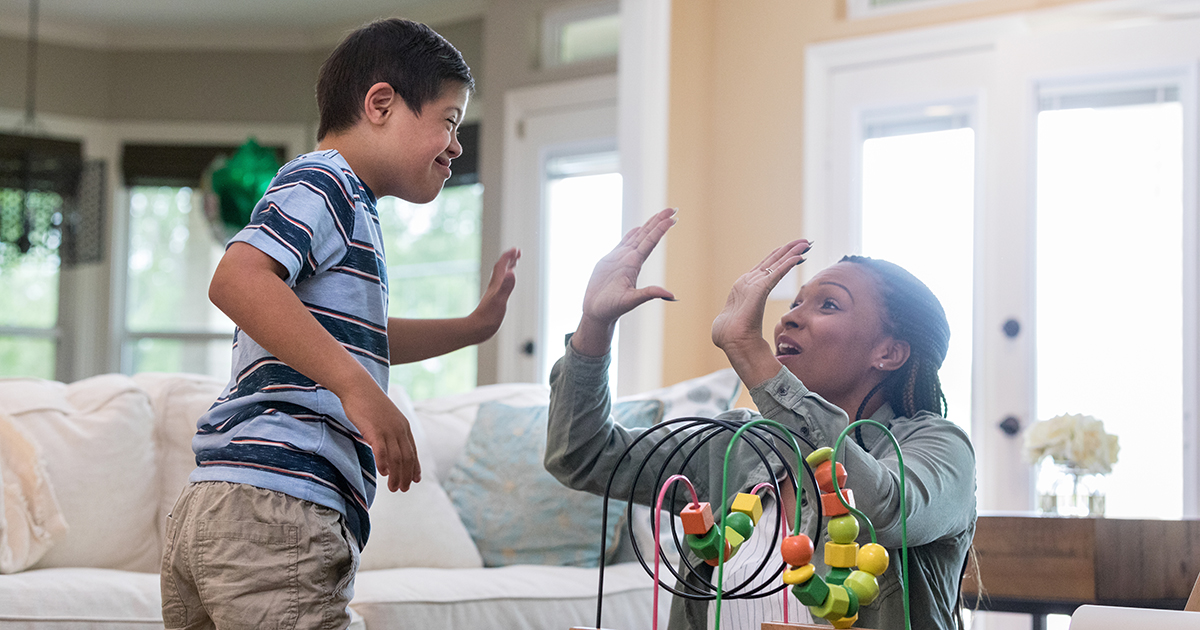ABA Practices and Positive Reinforcement
Positive reinforcement is one of the foundational components of Applied Behavior Analysis (ABA) services. The use of positive reinforcement has many advocates, and some detractors as well. In order to know if this behavior support strategy is a good fit for you or your loved one with an intellectual or developmental disability (IDD), you first need a basic understanding of what it is and how it works. Below is an overview to get you started.
What is Positive Reinforcement?
Positive reinforcement is when a positive/enjoyable response or item is provided after a desirable behavior is performed by an individual.
Example: Your son puts their dishes in the sink after a meal without you having to ask them to do so. (Desirable behavior is independently putting dishes away after eating.) Using a statement, such as, “Nice work,” can be given afterward.
Why use Positive Reinforcement?
When positive reinforcement is used effectively, it increases the likelihood that a particular behavior will occur again. This is usually learned through consistent response from the people providing care.
If the positive behavior is ignored, the individual receives no feedback after the behavior. Ignoring desirable behaviors may make it less likely that the individual will perform the behavior again in the future.
Examples of Reinforcers
- Attention, such as giving more attention to the individual when desirable behavior occurs.
- Social communication, such as verbal praise, high-fives or smiles.
- Using a token economy, which is a system for providing positive reinforcement by giving tokens for behaving in desirable ways. Tokens are then used to access desirable activities or items.
- Tangibles, such as giving more time with a favorite toy or activity, or offering favorite snacks and treats.
It is important to note that all people are different – what is reinforcing to one person may not be reinforcing to another.
When to Give Positive Reinforcement
You should offer positive reinforcement after a desirable behavior that you would like to occur again in the future. Examples of desirable behaviors:
- Use of new words or phrases
- Trying new foods
- Requesting specific items
- Independent skills, such as washing hands or putting on shoes
- Tolerating change in routine
Tips
Remember that reinforcement should be given as immediately as possible after the desirable behavior. You can use a variety of different reinforcers – if the same reinforcer is used for an extended time, it can lose its value. There is no “one size fits all” with reinforcers. Find out what reinforcers are effective and preferred for each person.
Services
Intensive ABA intervention can be offered in-home or in day clinics/centers. Direct Support Professionals can offer these services in group homes.
More Information on ABA and Positive Supports
- Considerations When Hiring an ABA Provider: ABA Resources
- Services – Minnesota Behavioral Specialists (mnbehavioral.com)
More Information and Support
Laura Baker Family Navigation Services offers free consultations and can discuss a wide variety services and help you decide what aligns best with your family’s goals. Schedule your consultation now.
 About the Author
About the Author
Ryan Kisor is a Community Service & In-Home Qualified Developmental Disability Professional (QDDP) at Laura Baker Services Association. He can be contacted at (507) 645-8866, ext. 106 or rkisor@laurabaker.org.
